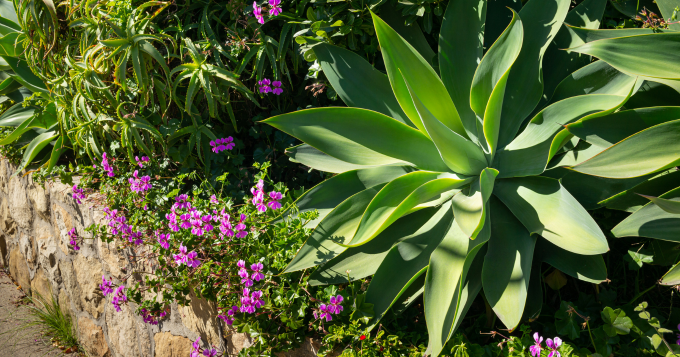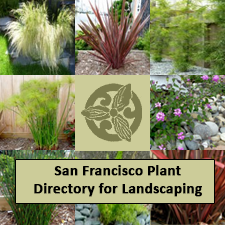
San Francisco is known for its beautiful landscaping and homes along the Pacific coastline. Many of the city’s homeowners prefer sustainable landscapes. This isn’t just a passing trend, either. Sustainable landscaping blends practices like composting and choosing native plants to help create an eco-friendly San Francisco environment. A healthy environment benefits people as well as nature. As such, there are a number of elements that define sustainable landscaping.
Sustainable landscaping practices have taken root as a long-lasting commitment in the picturesque backdrop of San Francisco, where the Pacific coastline meets stunning homes. Within the past ten years, homeowners across the city have embraced sustainable landscaping, recognizing its significance beyond being just a fleeting trend.
9 Sustainable Landscaping Practices
In this eco-conscious journey, San Francisco residents are weaving together a tapestry of practices that include composting and the careful selection of native plants, all in a collective effort to foster a greener and more sustainable environment for the city.
Optimal Growing Conditions
Understanding the specific growing conditions of different plant varieties is essential. It ensures that the garden beds are cultivated in a way that maximizes their health and vitality.
Native Plant Selection
The weather and climate of San Francisco are two main reasons why native plants are a good choice for landscaping projects. Native plants have adapted to local weather conditions and require little water or maintenance. Native plants can also protect against harmful plant diseases and pests.
Several of the best plants for San Francisco’s climate include California poppies, manzanita, and Douglas irises. These plants also provide nectar and offer a friendly habitat for butterflies and bees. They also preserve water, which makes them a perfect choice for sustainable landscaping.
Drought-Tolerant Landscaping
San Francisco does experience occasional droughts. This is why creating landscapes that can tolerate droughts is so vital for conservation. Xeriscaping provides effective landscaping techniques that reduce the need for irrigation.
Landscaping teams choose drought-resistant grasses and ground coverings that limit water consumption. Drip irrigation is another technique that delivers water directly to plant roots. Garden mulching is another effective method that helps prevent water from evaporating. Homeowners appreciate the money they can save on water bills through such techniques.
Given the region’s occasional dry spells, choosing drought-tolerant plants becomes pivotal. These hardy plants not only conserve water but also flourish in challenging conditions.
Soil Health and Composting
Composting helps to enrich the soil naturally. Kitchen scraps, trimmings from the yard, and other organic materials are perfect for composting efforts. Composting provides rich nutrients to the soil and helps to retain water.
Composting is also great for healthy plant growth. Your garden will love you for your composting efforts. Understanding the specific growing conditions of different plant varieties is essential. It ensures that the garden beds are cultivated in a way that maximizes their health and vitality.
Sustainable Hardscaping
Your walkways, retaining walls, and patios all play a major role in sustainable landscaping efforts. Hardscaping materials like stones, reclaimed wood, and pavers are good for the environment. They add character to landscapes. Softscaping involves the use of plants, trees, and shrubs. Landscapers design these elements to reduce runoff and allow water to seep into the ground. Both elements can provide beauty while benefiting the environment.
Energy-Efficient Lighting
San Francisco has a foggy environment, and outdoor lighting can save energy. LED fixtures and lights fueled by solar power provide several solutions. You can also install lighting systems that will turn on or off at specific times. You’ll save money on electric bills and contribute to the city’s efforts to conserve energy. Therefore, using eco-friendly lighting enhances the beauty of your landscape at night, helps lower energy costs, and reduces environmental impact.
Rainwater Harvesting
San Francisco’s commitment to sustainability includes conserving water resources. Sustainable landscaping practices prioritize smart irrigation and water-saving techniques to minimize waste and protect this precious resource.
Our city has its share of both rain and non-rainy weather. Rainwater is a natural resource that people can collect and use later for irrigation. It’s as simple as using rain barrels that connect to downspouts. Some residents choose to use storage tanks underground. These are great ways to harness the gift nature provides. Make sure your collection system is clean and free of any debris.
Ultimately, rainwater runoff management is all about efficiently managing rainwater runoff, which is integral to sustainable landscaping. It not only prevents erosion but also enables the utilization of rainwater for the garden’s benefit.
Integrated Pest Management
Chemicals used to control pests can harm the landscape and other animals. Qualified landscapers can protect the landscape while lessening the chance of causing damage to the environment. Choosing plants resistant to insect pests is the key. There are beneficial organisms like ladybugs and nematodes that can assist as well. The process of introducing these elements is called integrated pest management.
Wildlife-Friendly Landscaping
Why not design a landscape that’s friendly for birds and small mammals? This is an element of biodiversity that can give your outdoor areas a livelier feel while benefiting your environment. Biodiversity takes into account the variety of living organisms in a specific environment. Incorporating rock gardens not only adds aesthetic appeal but also offers a low-maintenance solution that complements San Francisco’s landscape beautifully.
Conclusion
In the pursuit of these sustainable landscaping practices, San Franciscan homeowners are environmentally friendly, contribute to the well-being of nature, and create a healthier environment for themselves and their communities. By conserving water, optimizing plant material, and employing eco-friendly lighting, San Francisco’s residents are nurturing landscapes that thrive while minimizing energy costs.
This harmonious blend of nature and urban living exemplifies San Francisco’s commitment to sustainability and the vision of a greener, more eco-friendly future.
The desire for sustainable landscaping has taken root in San Francisco. From softscape and hardscape landscaping designs to plant selection, composting and lighting that saves energy are all important elements that contribute to sustainable landscaping practices. The landscaping designs you choose can help San Francisco remain a wonderful place to live and visit.


